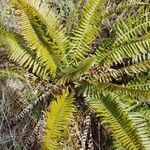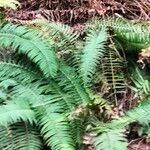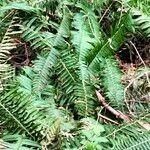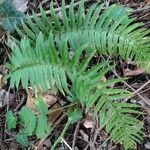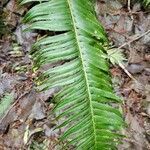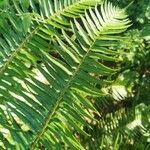A fern. It grows 60-120 cm high and 90-120 cm wide. It has a slow creeping rhizome. The fronds are sword shaped and leathery. They are 50-120 cm long. They are twice divided. There are up to 40 leaflets on each side. They are matt dark green and slightly hairy underneath. The leaflets are spiny toothed. They have orange spore bodies underneath.
